No products in the cart.
NEWS
Discover the Rich History and Flavor of Heirloom Potatoes
Potatoes are a staple crop worldwide, providing essential nutrients and culinary versatility. Yet, beyond the familiar varieties found in supermarkets lies a fascinating world of heritage: heirloom potatoes. These varieties, cultivated for generations, offer unique flavors, textures, and a direct link to agricultural history that modern commercial types often lack. Exploring and growing heirloom potatoes is a rewarding experience for any gardener seeking to add something special to their plot and palate.
What Exactly Are Heirloom Potatoes?
The definition of “heirloom” in the context of potatoes can vary slightly among enthusiasts and growers. Commonly, the term refers to varieties that were cultivated prior to 1951, the year hybrid potatoes began to dominate the market. Another definition suggests a variety must have been grown from true seed (not necessarily genetically modified) for at least 100 years to qualify as an heirloom.
Historically, heirloom potatoes faced a significant challenge with the potato blights of the mid-19th century. Varieties grown before the devastating blight of the 1840s are now exceptionally rare and primarily found in scientific gene banks. The heirloom potato varieties available today generally originated in the 1850s and 1860s, developed from breeding stock imported from regions like Mexico and South America that possessed natural resistance to blight. A pivotal stock variety from this era was ‘Garnet Chile’, which is the ancestor of many beloved American heirloom types still cultivated today.
Why Grow Heirloom Potatoes?
Choosing to grow heirloom potato varieties brings several advantages to the home garden. Foremost among these is the incredible diversity in flavor, texture, color, and shape that far surpasses that of conventional potatoes. Heirloom potatoes can range from intensely starchy to beautifully waxy, offering distinct characteristics for specific culinary uses.
Furthermore, growing heirlooms is an act of preserving agricultural biodiversity and heritage. Each variety has a story and a lineage, connecting the gardener to past generations of cultivators. Since heirloom seed potatoes are saved year after year and grow true to type, you can reliably cultivate your favorite varieties season after season, ensuring their continued existence. These heritage spuds can be successfully grown using various methods, including traditional ground beds, raised beds, or containers, making them accessible to many home gardeners. They are typically well-suited to USDA Zones 4-9 and prefer well-drained, slightly acidic soil with a pH around 6.
Top Heirloom Potato Varieties to Cultivate
For gardeners ready to explore the world of heritage spuds, here are some of the best and most interesting heirloom potato varieties worth considering for your next growing season:
‘Early Rose’
A true classic with roots in South America, ‘Early Rose’ holds historical significance as a parent variety to the ubiquitous ‘Russet Burbank’. First cultivated in the 1860s, this heirloom produces medium-sized tubers featuring smooth, reddish-pink skin and a fluffy, white interior. It’s particularly prized for mashing and roasting, delivering a delightful texture and flavor. ‘Early Rose’ thrives best in cooler growing conditions, making it a favored choice in northern climates.
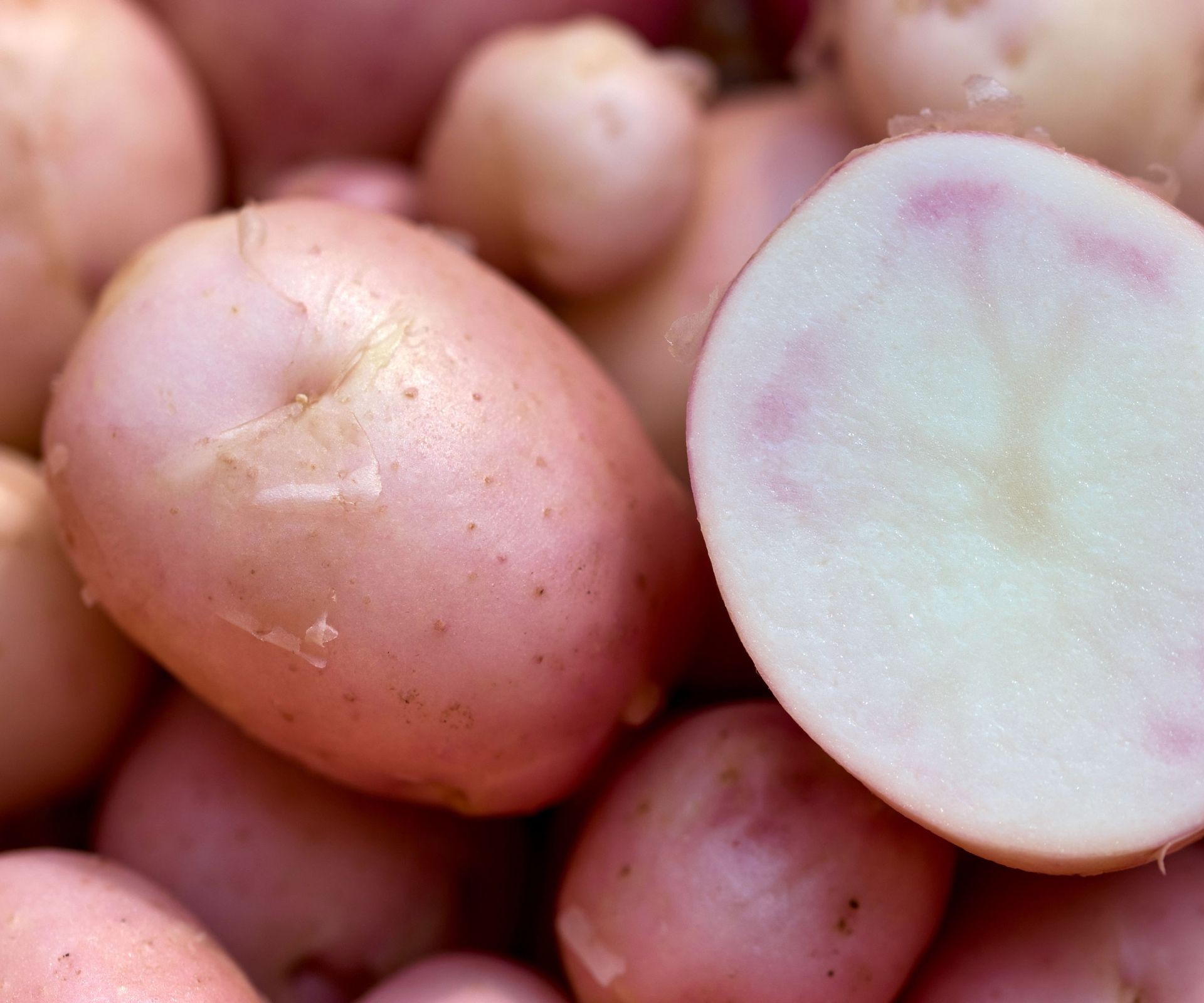 Newly harvested and sliced Early Rose heirloom potatoes showing red skin and white flesh
Newly harvested and sliced Early Rose heirloom potatoes showing red skin and white flesh
‘Russet Burbank’
Perhaps the most widely recognized name in North American potatoes, ‘Russet Burbank’ is a direct descendent of ‘Early Rose’. Developed from an 1850s breeding program, it earned its reputation as “the potato that built Idaho.” This variety is celebrated by chefs for its high starch content and somewhat coarse texture, making it exceptional for fluffy mashed potatoes and crispy chips. It’s a versatile addition to any vegetable garden.
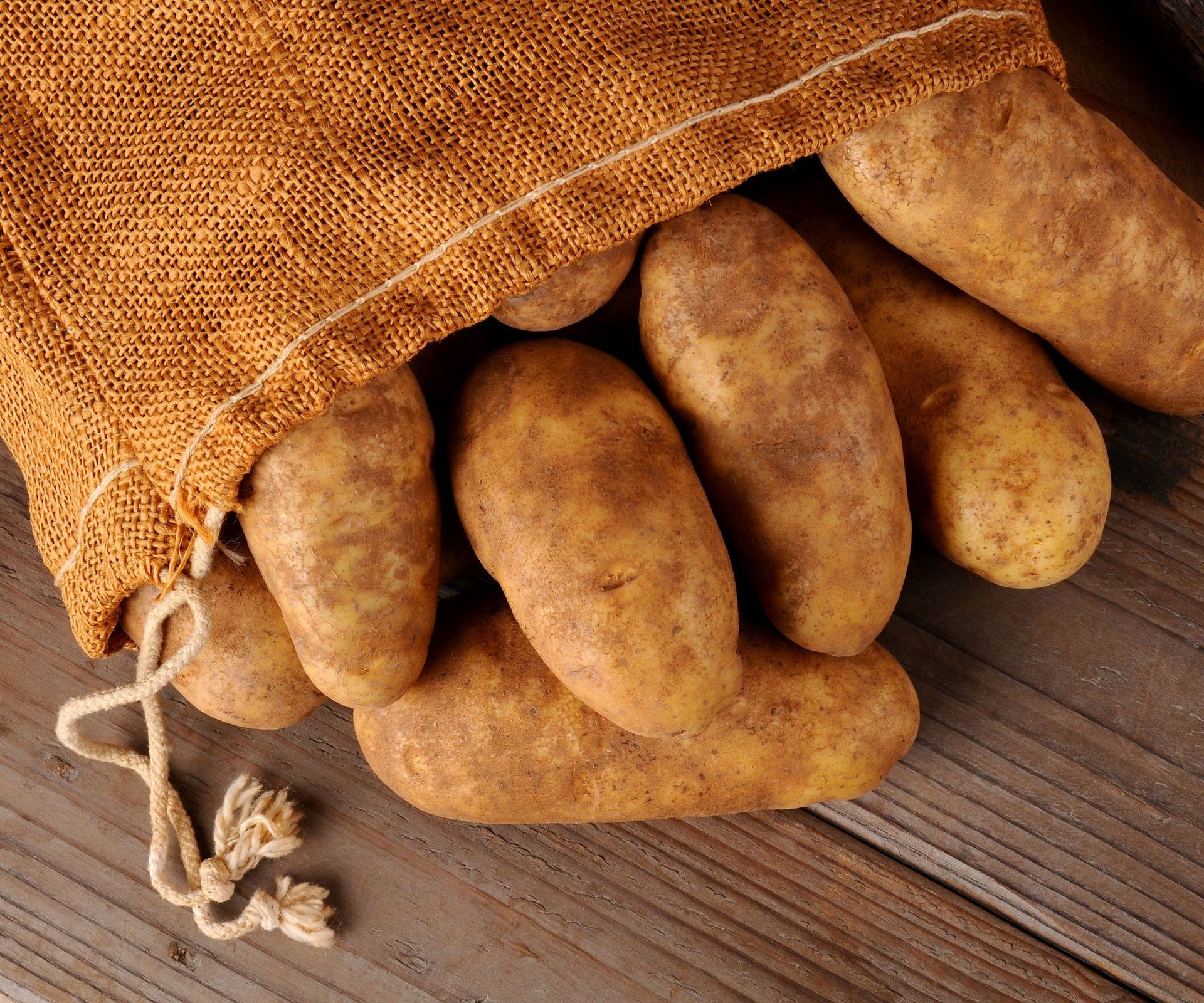 A hessian sack filled with freshly harvested Russet Burbank heirloom potatoes
A hessian sack filled with freshly harvested Russet Burbank heirloom potatoes
‘Irish Cobbler’
Dating back to 1876, the ‘Irish Cobbler’ is an early-maturing heirloom that yields medium-sized, oblong tubers. It’s characterized by its classic potato shape with noticeably deep-set eyes. This variety is another starch powerhouse, boasting a dry, creamy white flesh that is absolutely perfect for baking or creating smooth mashed potatoes. While well-suited for both traditional garden beds and container gardening, gardeners should be mindful of its susceptibility to verticillium wilt.
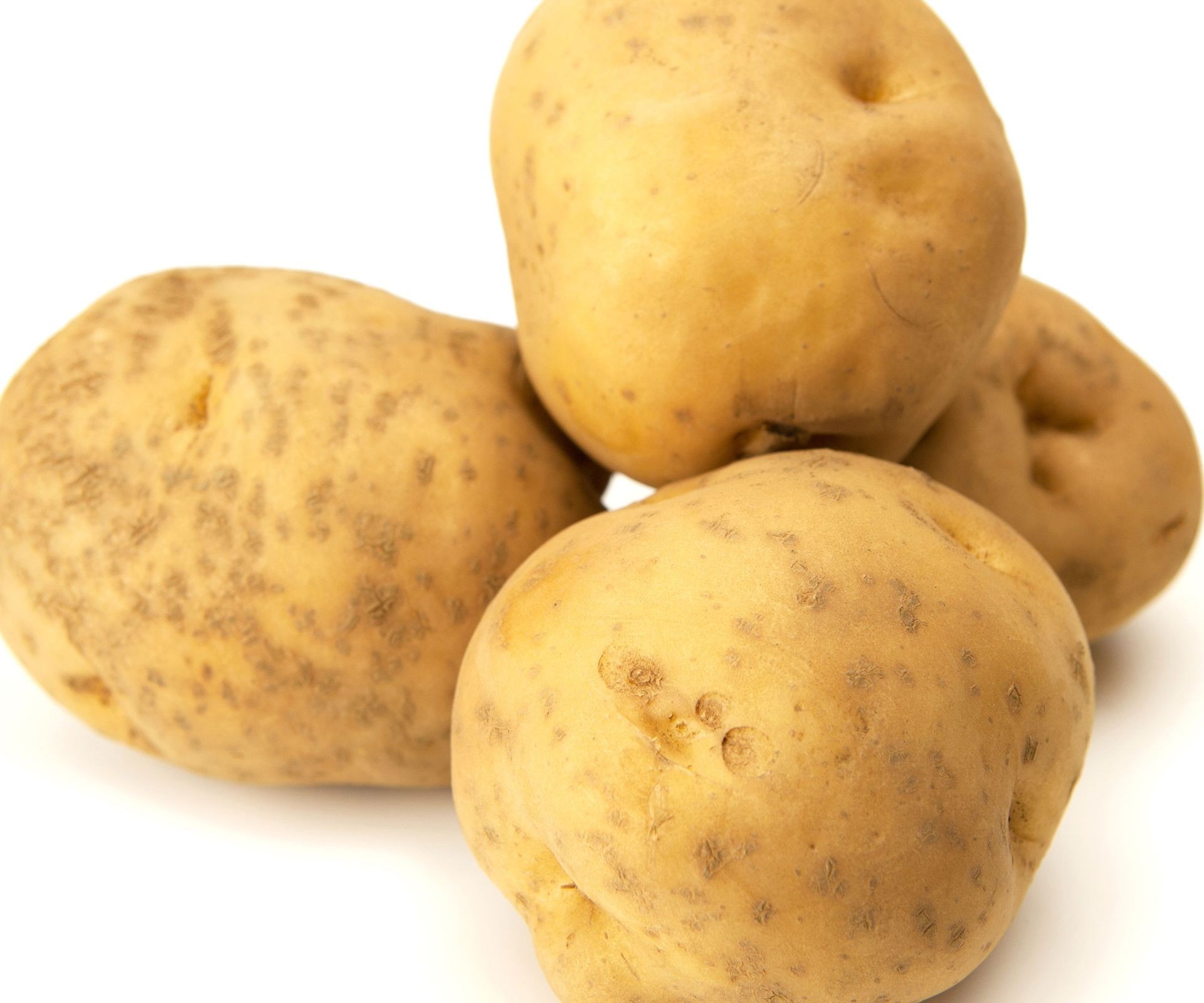 Harvested Irish Cobbler heirloom potatoes displayed in a garden setting
Harvested Irish Cobbler heirloom potatoes displayed in a garden setting
‘Bliss Triumph’
Introduced around 1878, ‘Bliss Triumph’, also known as ‘Red Bliss’, is a visually appealing heirloom resulting from a cross between ‘Early Rose’ and ‘Peerless’. This variety features white flesh and is available with red, pink, or white skin, with the red-skinned version being particularly popular for its rosy hue. While it sprouts early, making it an exciting early harvest, its delicate skin can make it susceptible to potato blight and other diseases. Despite this, its versatility in the kitchen and attractive look make it a delightful addition to the home garden.
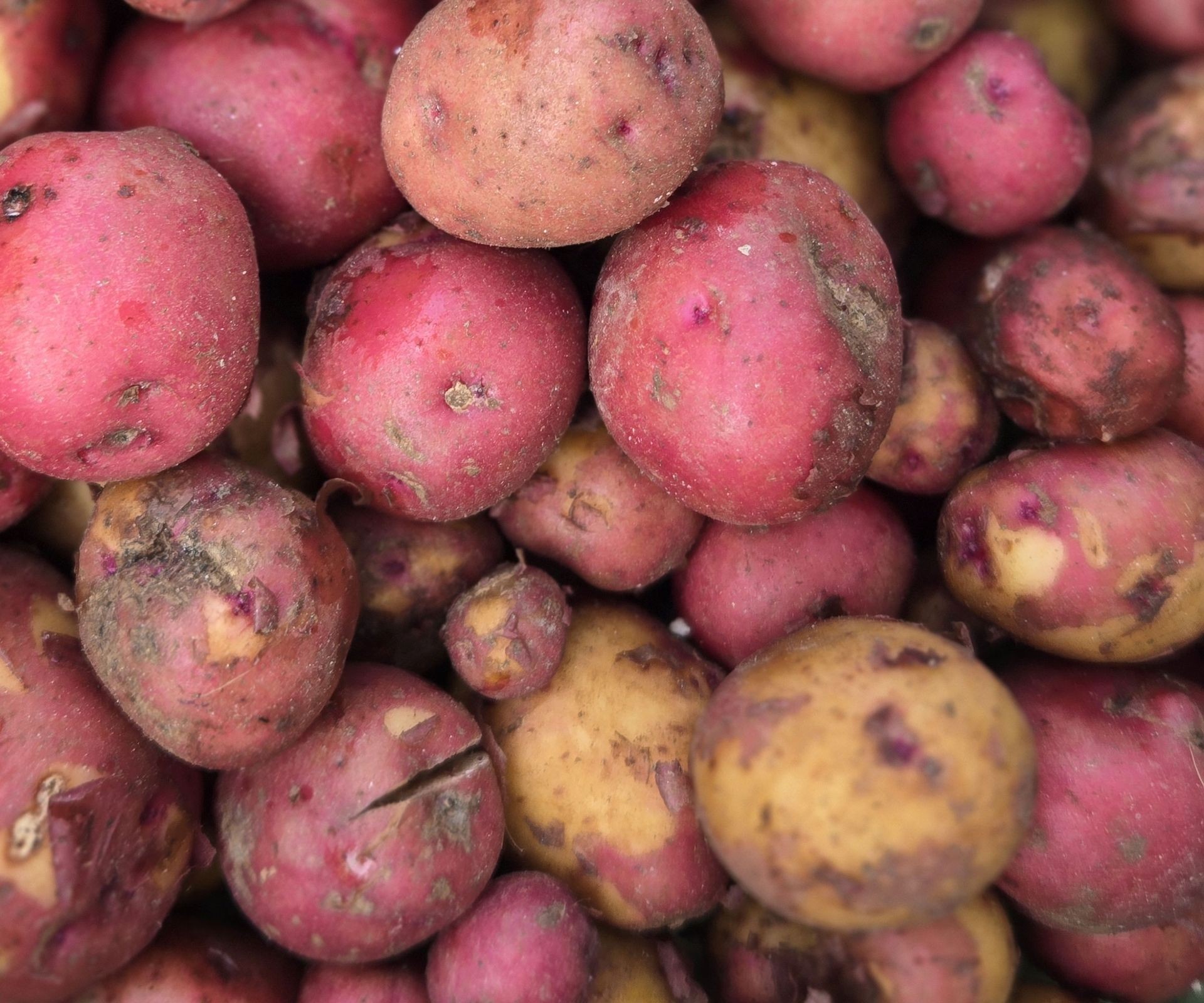 Pile of Red Bliss Triumph heirloom potatoes with vibrant red skin
Pile of Red Bliss Triumph heirloom potatoes with vibrant red skin
‘Early Ohio’
Emerging in 1875 as a seedling of ‘Early Rose’, ‘Early Ohio’ quickly gained popularity due to its rapid maturity and prolific yields, establishing a strong market presence. It’s an excellent heirloom choice, particularly well-suited for northern growing regions. This variety produces larger, roundish tubers with light tan skin and firm, white flesh. As a first-early potato, it’s ready for harvest sooner than many others and holds its shape exceptionally well when boiled, making it ideal for potato salads. Thriving in fertile, well-drained soil, ‘Early Ohio’ is a reliable heavy yielder for ground-based or raised bed gardening.
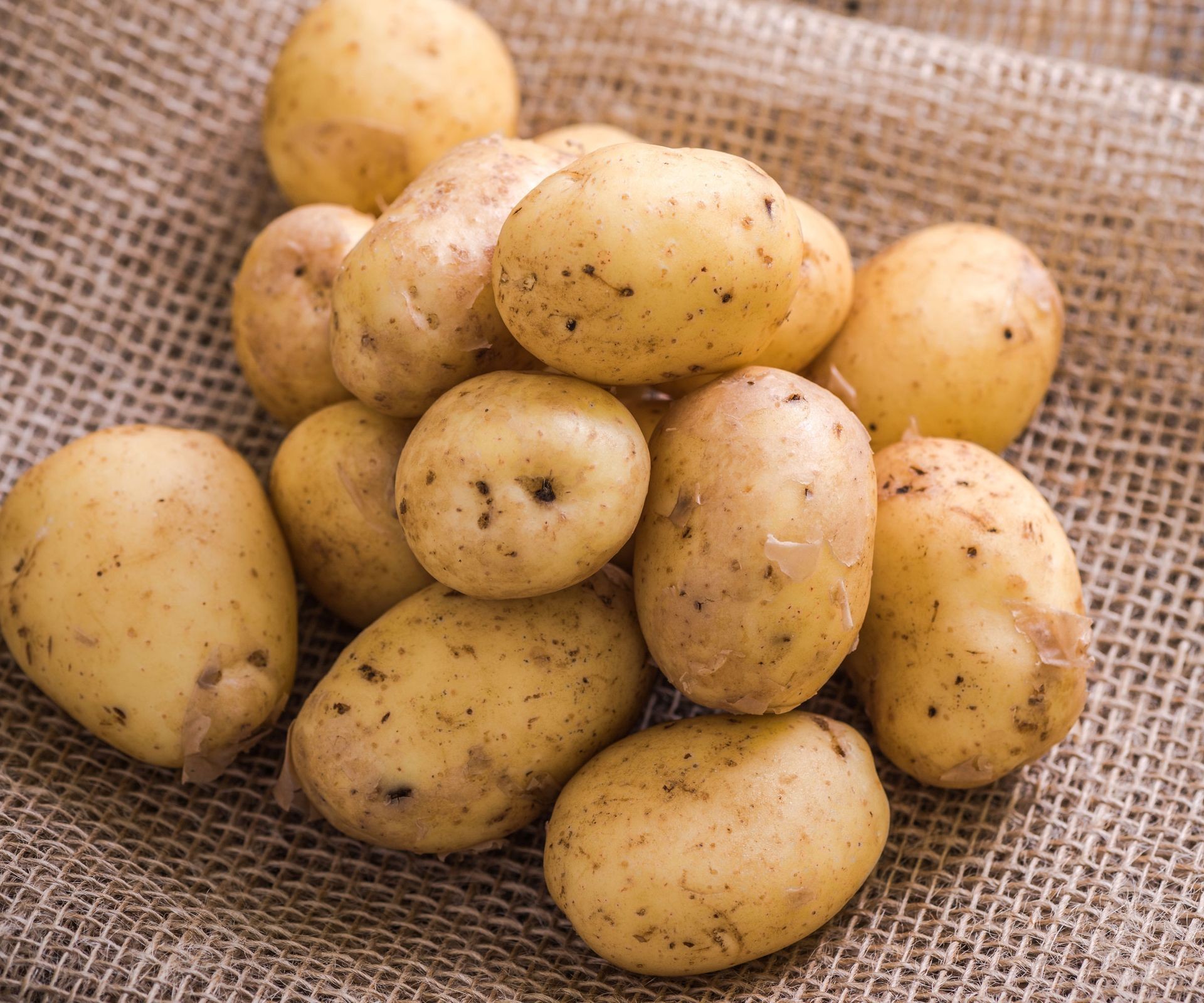 Group of harvested Early Ohio heirloom potatoes with light tan skin
Group of harvested Early Ohio heirloom potatoes with light tan skin
‘German Butterball’
‘German Butterball’ presents an interesting case in the heirloom world. While it only debuted in 1988, it’s classified as an heirloom because its breeder, David Ronniger, developed it from 19th-century parent stock. This variety is known for its substantial size, with tubers potentially reaching up to two pounds. As its name suggests, it offers a memorable, buttery taste and a wonderfully creamy texture. ‘German Butterball’ is highly versatile in the kitchen, performing beautifully whether fried, steamed, or roasted.
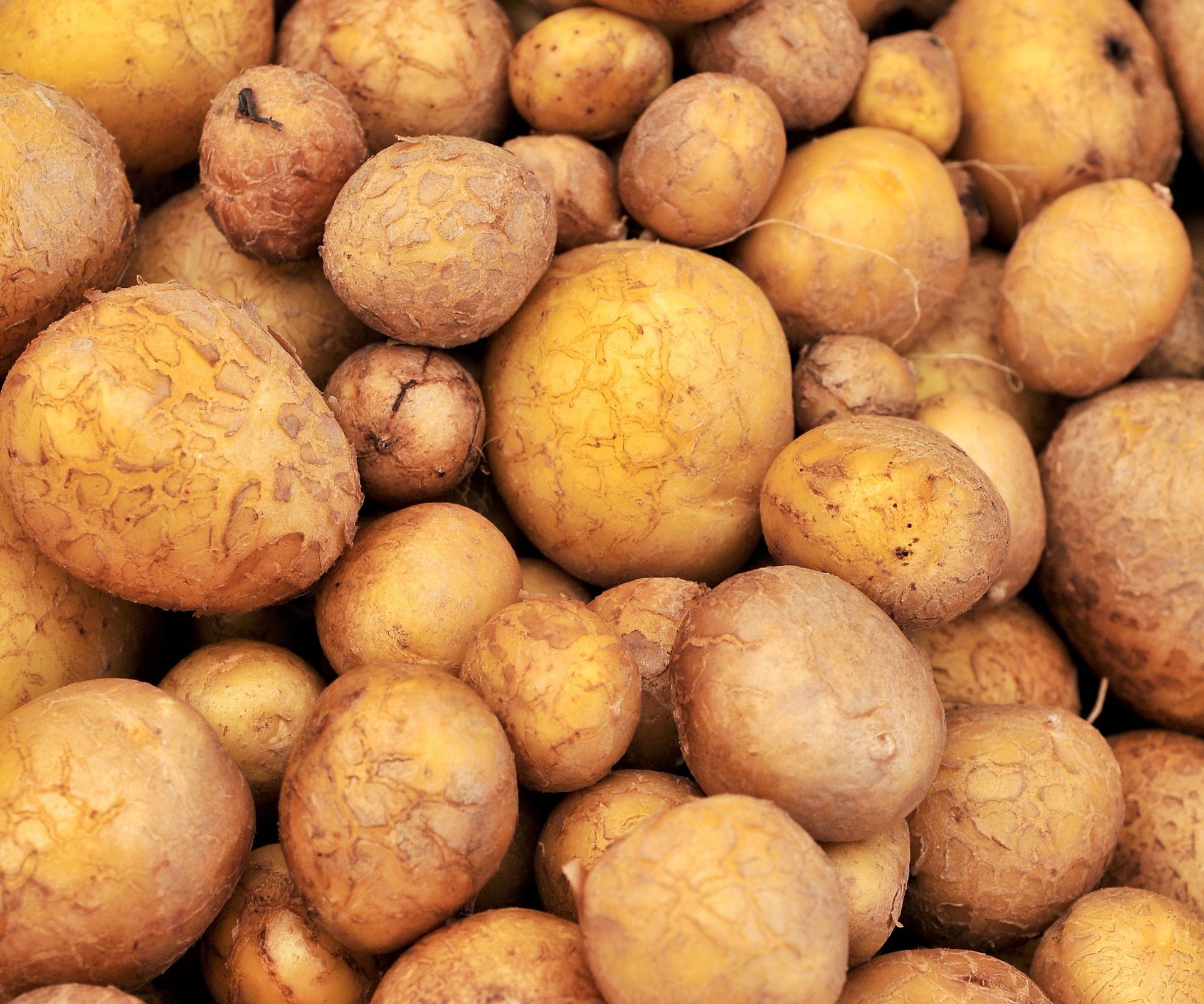 Harvested German Butterball heirloom potatoes in various sizes
Harvested German Butterball heirloom potatoes in various sizes
‘Russian Banana’ Fingerling
Fingerling potatoes are a category desired for their small, elongated shape, thin skins, and concentrated flavors. The ‘Russian Banana’ is a prominent heirloom fingerling, distinctively waxy with vibrant yellow flesh. Its shape and size vary, often resembling a finger or even a small banana, sometimes with a noticeable curvature. This variety offers a mild, slightly nutty flavor profile and holds up exceptionally well when boiled, making it perfect for salads. Its compact nature also makes ‘Russian Banana’ an excellent choice for container potato growing.
Essential Tips for Growing Heirloom Potatoes
Cultivating heirloom potatoes successfully involves a few key considerations. They generally thrive in USDA Zones 4-9. Plant them in well-drained soil with a slightly acidic pH, ideally around 6. Provide consistent moisture without waterlogging.
Be vigilant in monitoring for pests and diseases, as some heirloom varieties can be more susceptible than their modern counterparts. If you spot signs of disease, promptly remove affected foliage and dispose of it away from the garden to prevent spread. Remember to wash your hands after handling diseased plants. To avoid issues like sun scab, allow seed potatoes (not mature tubers intended for storage) to green slightly in the sun before planting, as this process hardens the skin.
Frequently Asked Questions
What are heirloom fingerling potatoes?
Heirloom fingerling potatoes are heritage varieties characterized by their small, elongated, finger-like shape, thin skins, and often rich flavors. The ‘Russian Banana’ is a well-known example. Other popular heirloom fingerlings include ‘Rose Finn Apple’, a golden-skinned variety traced back to Andes stock in 1840, and ‘Ruby Crescent Fingerling’, noted for its red exterior and creamy yellow flesh.
Are there any problems growing heirloom potatoes?
The primary challenge when growing some heirloom potato varieties is their potential susceptibility to diseases, particularly blight or verticillium wilt, depending on the specific type. Compared to some disease-resistant modern hybrids, heirlooms may require closer monitoring and proactive management.
What should I do if I see signs of disease on heirloom potatoes?
Immediate action is crucial if you notice signs of disease on your heirloom potato plants. Carefully remove any foliage showing symptoms like spots, wilting, or discoloration. Dispose of this affected material responsibly, away from your garden beds, to prevent pathogens from spreading. It’s important to clean your tools and wash your hands thoroughly after handling diseased plants. For prevention of sun scab, make sure only seed potatoes (before planting) are exposed to light to green up and harden the skin, not mature tubers you plan to eat or store.
Conclusion
Exploring and growing heirloom potato varieties is a rewarding experience that brings unique flavors, textures, and a piece of agricultural history to your table. From the classic ‘Early Rose’ to the distinct ‘Russian Banana’ fingerling, there’s an heirloom variety to excite every gardener and cook. By choosing to cultivate these heritage spuds, you’re not only enjoying exceptional produce but also contributing to the preservation of biodiversity. Embark on this flavorful journey with confidence, knowing that resources and support for your gardening endeavors are available.



